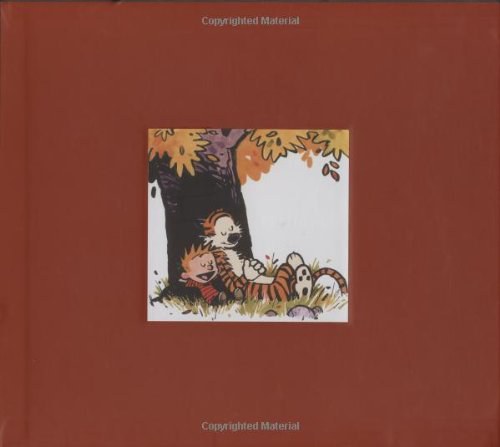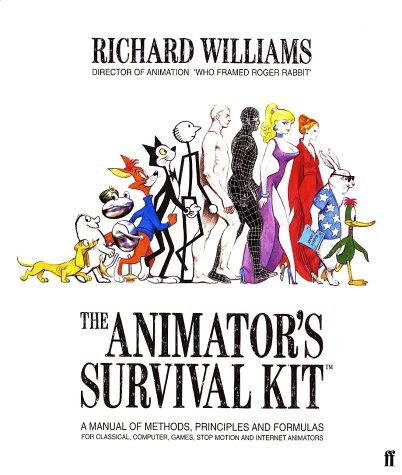
《Deep Learning》书籍《Deep Learning》
书刊介绍
内容简介
"Written by three experts in the field, Deep Learning is the only comprehensive book on the subject." -- Elon Musk, co-chair of OpenAI; co-founder and CEO of Tesla and SpaceX
Deep learning is a form of machine learning that enables computers to learn from experience and understand the world in terms of a hierarchy of concepts. Because the computer gathers knowledge from experience, there is no need for a human computer operator to formally specify all the knowledge that the computer needs. The hierarchy of concepts allows the computer to learn complicated concepts by building them out of simpler ones; a graph of these hierarchies would be many layers deep. This book introduces a broad range of topics in deep learning.
The text offers mathematical and conceptual background, covering relevant concepts in linear algebra, probability theory and information theory, numerical computation, and machine learning. It describes deep learning techniques used by practitioners in industry, including deep feedforward networks, regularization, optimization algorithms, convolutional networks, sequence modeling, and practical methodology; and it surveys such applications as natural language processing, speech recognition, computer vision, online recommendation systems, bioinformatics, and videogames. Finally, the book offers research perspectives, covering such theoretical topics as linear factor models, autoencoders, representation learning, structured probabilistic models, Monte Carlo methods, the partition function, approximate inference, and deep generative models.
Deep Learning can be used by undergraduate or graduate students planning careers in either industry or research, and by software engineers who want to begin using deep learning in their products or platforms. A website offers supplementary material for both readers and instructors.
作品目录
Acknowledgments xv
Notation xix
1 Introduction 1
1.1 Who Should Read This Book? 8
1.2 Historical Trend sin Deep Learning 12
I Applied Math and Machine Learning Basics 27
2 Linear Algebra 29
2.1 Scalars, Vectors, Matrices and Tensors 29
2.2 Multiplying Matricesand Vectors 32
2.3 Identity and Inverse Matrices 34
2.4 Linear Dependence and Span 35
2.5 Norms 36
2.6 Special Kinds of Matrices and Vectors 38
2.7 Eigendecomposition 39
2.8 Singular Value Decomposition 42
2.9 The Moore-Penrose Pseudoinverse 43
2.10 The Trace Operator 44
2.11 The Determinant 45
2.12 Example: Principal Components Analysis 45
3 Probability and Information Theory 51
3.1 Why Probability? 52
3.2 Random Variables 54
3.3 Probability Distributions 54
3.4 Marginal Probability 56
3.5 ConditionalProbability 57
3.6 The Chain Rule of Conditional Probabilities 57
3.7 Independence and Conditional Independence 58
3.8 Expectation, Varianceand Covariance 58
3.9 Common Probability Distributions 60
3.10 UsefulPropertiesofCommonFunctions 65
3.11 Bayes’Rule 68
3.12 Technical Details of Continuous Variables 68
3.13 Information Theory 70
3.14 Structured Probabilistic Models 74
4 Numerical Computation 77
4.1 Overflow and Underflow 77
4.2 Poor Conditioning 79
4.3 Gradient-Based Optimization 79
4.4 Constrained Optimization 89
4.5 Example: Linear Least Squares 92
5 Machine Learning Basics 95
5.1 Learning Algorithms 96
5.2 Capacity, Overfitting and Underfitting 107
5.3 Hyperparameters and Validation Sets 117
5.4 Estimators, Bias and Variance 119
5.5 Maximum Likelihood Estimation 128
5.6 BayesianStatistics132
5.7 Supervised Learning Algorithms 136
5.8 Unsupervised Learning Algorithms142
5.9 StochasticGradientDescent 147
5.10 Building a Machine Learning Algorithm 149
5.11 Challenges Motivating Deep Learning 151
II Deep Networks: Modern Practices 161
6 Deep Feedforward Networks 163
6.1 Example:Learning XOR 166
6.2 Gradient-Based Learning 171
6.3 Hidden Units 185
6.4 Architecture Design 191
6.5 Back-Propagation and Other Dierentiation Algorithms 197
6.6 Historical Notes 217
7 Regularization for Deep Learning 221
7.1 Parameter Norm Penalties 223
7.2 Norm Penalties as Constrained Optimization 230
7.3 Regularization and Under-Constrained Problems 232
7.4 Dataset Augmentation 233
7.5 Noise Robustness 235
7.6 Semi-Supervised Learning236
7.7 Multitask Learning 237
7.8 Early Stopping 239
7.9 Parameter Tying and Parameter Sharing 246
7.10 Sparse Representations 247
7.11 Bagging and Other Ensemble Methods 249
7.12 Dropout 251
7.13 Adversarial Training261
7.14 Tangent Distance, Tangent Prop and Manifold Tangent Classiffer 263
8 Optimization for Training DeepModels 267
8.1 How Learning Differs from Pure Optimization 268
8.2 Challenges in Neural Network Optimization 275
8.3 Basic Algorithms 286
8.4 Parameter Initialization Strategies 292
8.5 Algorithms with Adaptive Learning Rates 298
8.6 Approximate Second-Order Methods 302
8.7 Optimization Strategies and Meta-Algorithms 309
9 Convolutional Networks 321
9.1 The Convolution Operation 322
9.2 Motivation 324
9.3 Pooling 330
9.4 Convolution and Pooling as an Infinitely Strong Prior 334
9.5 Variants of the Basic Convolution Function 337
9.6 Structured Outputs 347
9.7 Data Types 348
9.8 Efficient Convolution Algorithms 350
9.9 Random or Unsupervised Features 351
9.10 The Neuroscientific Basis for Convolutional Networks 353
9.11 Convolutional Networks and the History of Deep Learning 359
10 Sequence Modeling: Recurrent and Recursive Nets 363
10.1 Unfolding Computational Graphs 365
10.2 Recurrent Neural Networks 368
10.3 Bidirectional RNNs 383
10.4 Encoder-Decoder Sequence-to-Sequence Architectures 385
10.5 Deep Recurrent Networks 387
10.6 Recursive Neural Networks 388
10.7 The Challenge of Long-Term Dependencies 390
10.8 Echo State Networks 392
10.9 Leaky Units and Other Strategies for Multiple Time Scales 395
10.10 The Long Short-Term Memory and Other Gated RNNs 397
10.11 Optimization for Long-Term Dependencies 401
10.12 Explicit Memory 405
11 Practical Methodology 409
11.1 Performance Metrics 410
11.2 DefaultBaselineModels 413
11.3 Determining Whether to Gather More Data 414
11.4 Selecting Hyperparameters 415
11.5 Debugging Strategies 424
11.6 Example: Multi-Digit Number Recognition 428
12 Applications 431
12.1 Large-Scale Deep Learning 431
12.2 Computer Vision.440
12.3 Speech Recognition 446
12.4 Natural Language Processing 448
12.5 Other Applications 465
III Deep Learning Research 475
13 Linear Factor Models 479
13.1 Probabilistic PCA and Factor Analysis 480
13.2 Independent Component Analysis (ICA) 481
13.3 Slow Feature Analysis.484
13.4 Sparse Coding 486
13.5 Manifold Interpretation of PCA 489
14 Autoencoders 493
14.1 Undercomplete Autoencoders 494
14.2 Regularized Autoencoders 495
14.3 Representational Power, Layer Size and Depth 499
14.4 Stochastic Encodersand Decoders 500
14.5 Denoising Autoencoders501
14.6 Learning Manifolds with Autoencoders 506
14.7 Contractive Autoencoders 510
14.8 Predictive Sparse Decomposition 514
14.9 Applications of Autoencoders515
15 Representation Learning 517
15.1 Greedy Layer-Wise Unsupervised Pretraining 519
15.2 Transfer Learning and Domain Adaptation 526
15.3 Semi-Supervised Disentangling of Causal Factors 532
15.4 Distributed Representation 536
15.5 Exponential Gains from Depth 543
15.6 Providing Clues to Discover Underlying Causes 544
16 Structured Probabilistic Models for Deep Learning 549
16.1 The Challenge of Unstructured Modeling 550
16.2 Using Graphs to Describe Model Structure 554
16.3 Sampling from Graphical Models 570
16.4 Advantages of Structured Modeling 572
16.5 Learning about Dependencies 572
16.6 Inferenceand Approximate Inference 573
16.7 The Deep Learning Approach to Structured Probabilistic Models 575
17 Monte Carlo Methods 581
17.1 Sampling and Monte Carlo Methods 581
17.2 Importance Sampling 583
17.3 Markov Chain Monte Carlo Methods 586
17.4 Gibbs Sampling 590
17.5 The Challenge of Mixing between Separated Modes 591
18 Confronting the Partition Function 597
18.1 The Log-Likelihood Gradient 598
18.2 Stochastic Maximum Likelihood and Contrastive Divergence 599
18.3 Pseudolikelihood 607
18.4 Score Matching and Ratio Matching 609
18.5 DenoisingScore Matching 611
18.6 Noise-Contrastive Estimation 612
18.7 Estimatingthe Partition Function 614
19 Approximate Inference 623
19.1 Inferenceas Optimization 624
19.2 Expectation Maximization 626
19.3 MAP Inferenceand Sparse Coding 627
19.4 Variational Inferenceand Learning 629
19.5 Learned Approximate Inference 642
20 Deep Generative Models 645
20.1 Boltzmann Machines 645
20.2 Restricted Boltzmann Machines 647
20.3 Deep Belief Networks 651
20.4 Deep Boltzmann Machines 654
20.5 Boltzmann Machines for Real-Valued Data 667
20.6 Convolutional Boltzmann Machines 673
20.7 Boltzmann Machines for Structured or Sequential Outputs 675
20.8 Other Boltzmann Machines.677
20.9 Back-Propagation through Random Operations 678
20.10 Directed Generative Nets 682
20.11 Drawing Samples from Autoencoders 701
20.12 Generative Stochastic Networks 704
20.13 Other Generation Schemes 706
20.14 Evaluating Generative Models 707
20.15 Conclusion 710
Bibliography 711
Index 767
相关推荐
-

出世还是入世
《出世还是入世》内容简介:本书作者何善蒙老师用通俗易懂的语言,讲解以孔孟老庄等十四位中国古代哲人的思想,展现中国先哲的人生
-

地理空间元数据关联网络构建与应用
地理空间元数据关联网络构建与应用 本书特色 在介绍相关研究背景与意义、国内外研究现状、相关理论方法的基础上,本书阐述面向关联数据的地理空间数据语义关联网络构建方...
-

电子商务基础
《电子商务基础》内容简介:本书以一个完整的电子商务网上交易项目贯穿课程教学始终,以项目的实现过程为线索展开教学内容,整个教
-

IBM最佳实践-Java企业级持久化技术指南
IBM最佳实践-Java企业级持久化技术指南 本书特色 《IBM*佳实践:Java企业级持久化技术指南》:搜索关键词“Java和关系型数据库”可返回许多链接,这...
-

经济学夜话:宏观篇
《经济学夜话:宏观篇》内容简介:本书为《经济学夜话》的“宏观篇”,紧跟当下实事,话题涉及新冠疫情下的世界经济、如何衡量物价
-

耶彭伯格《ActionScript 3.0基础教程》
ActionScript3.0是Flash编程语言的一次重大升级,它更加高效、清晰和完善。《ActionScript3.0基础教程》详细地介绍了ActionSc...
-

硅谷工程师爸爸的超强数学思维课:建立孩子的几何思维
《硅谷工程师爸爸的超强数学思维课:建立孩子的几何思维》内容简介:如何开发孩子的数学思维?如何让孩子把数学与生活结合起来,学
-

不懂Word Excel PPT还敢拼职场-高手指引-赠送多维度学习套餐
不懂Word Excel PPT还敢拼职场-高手指引-赠送多维度学习套餐 本书特色 一个菜鸟用Excel改变职场的真实故事。如果说有什么技能是快速通关职场**技...
-

班克斯的帝国博物学
《班克斯的帝国博物学》内容简介:班克斯是英国启蒙运动时期最具影响力的博物学家之一,是迄今为止任期最长的英国皇家学会主席。班
-

CX5477AUTOCAD2009电气设计110例附光盘
CX5477AUTOCAD2009电气设计110例附光盘 本书特色 《AutoCAD 2009电气设计110例》特点:专业实用职场红宝书超长时间视频讲解双栏排版...
-

最后一个人类
《最后一个人类》内容简介:你是否想过,人类遭受的疾病、衰老和死亡并非命中注定? 你是否认同,人类的身体系统是有缺陷的,可以通
-

孟浩然集
《孟浩然集》内容简介:孟浩然是盛唐杰出诗人,创作了大量的山水田园诗,风格清淡旷远,与王维并称,是盛唐山水田园诗派的代表人物
-

Excel 2007实战技巧精粹-(附光盘)
Excel 2007实战技巧精粹-(附光盘) 本书特色 用数据说话《excel实战技巧精粹》,2007年上市,至今销售60000册《excel应用大全》,200...
-

《Smarty》书籍《Smarty》
Astep-by-stepguidetobuildingPHPwebsitesandapplicationsusingtheSmartytemplatingen...
-

私域流量池
《私域流量池》内容简介:本书是私域流量领域具有权威性和实战性的运营教科书,是作者在2年多的时间里成功指导3万余家企业实现最大
-

穿透心智:企业战略定位实践方法
《穿透心智:企业战略定位实践方法》内容简介:当前,世界经济下行、商业环境发生巨变,从工厂时代到市场时代,再到过剩经济的时代
-

职场礼仪教程
《职场礼仪教程》内容简介:本书作为高等职业院校新型实用礼仪教材,是项目课程开发的实践尝试。其内容是根据企事业单位核心岗位所
-

PyTorch深度学习实战
《PyTorch深度学习实战》内容简介:本书帮助读者快速深入深度学习。在过去的几年里,我们看到深度学习成了新的动力。它从学术界一路
-

大数据技术入门(第2版)
《大数据技术入门(第2版)》内容简介:目前国内大数据市场继续保持高速的发展态势,作者在与地方政府、证券金融公司的项目合作中发
-

破解牛股密码(第2版)
《破解牛股密码(第2版)》内容简介:本书通过对市场中个股的描述,总结出牛股上涨的内在因素和外在图形特征,通过对牛股内外在特征





